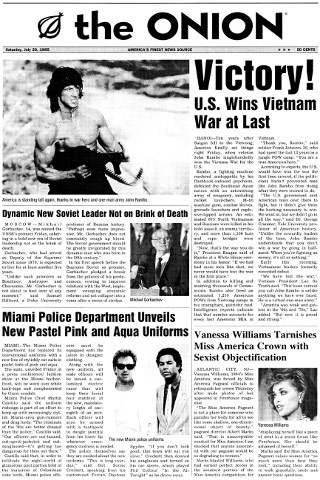A/B Testing Spaghetti Sauce
Earlier this week I was perusing some TED Talks and ran across this old (and apparently popular) presentation by Malcolm Gladwell. It struck me as particularly relevant to several topics I’ve explored on this blog, including Sunday’s post on the merits of A/B testing. In the video, Gladwell explains why there are a billion different varieties of Spaghetti sauce at most supermarkets:
Again, this video touches on several topics explored on this blog in the past. For instance, it describes the origins of what’s become known as the Paradox of Choice (or, as some would have you believe, the Paradise of Choice) – indeed, there’s another TED talk linked right off the Gladwell video that covers that topic in detail.
The key insight Gladwell discusses in his video is basically the destruction of the Platonic Ideal (I’ll summarize in this paragraph in case you didn’t watch the video, which covers the topic in much more depth). He talks about Howard Moskowitz, who was a market research consultant with various food industry companies that were attempting to optimize their products. After conducting lots of market research and puzzling over the results, Moskowitz eventually came to a startling conclusion: there is no perfect product, only perfect products. Moskowitz made his name working with spaghetti sauce. Prego had hired him in order to find the perfect spaghetti sauce (so that they could compete with rival company, Ragu). Moskowitz developed dozens of prototype sauces and went on the road, testing each variety with all sorts of people. What he found was that there was no single perfect spaghetti sauce, but there were basically three types of sauce that people responded to in roughly equal proportion: standard, spicy, and chunky. At the time, there were no chunky spaghetti sauces on the market, so when Prego released their chunky spaghetti sauce, their sales skyrocketed. A full third of the market was underserved, and Prego filled that need.
Decades later, this is hardly news to us and the trend has spread from the supermarket into all sorts of other arenas. In entertainment, for example, we’re seeing a move towards niches. The era of huge blockbuster bands like The Beatles is coming to an end. Of course, there will always be blockbusters, but the really interesting stuff is happening in the niches. This is, in part, due to technology. Once you can fit 30,000 songs onto an iPod and you can download “free” music all over the internet, it becomes much easier to find music that fits your tastes better. Indeed, this becomes a part of peoples’ identity. Instead of listening to the mass produced stuff, they listen to something a little odd and it becomes an expression of their personality. You can see evidence of this everywhere, and the internet is a huge enabler in this respect. The internet is the land of niches. Click around for a few minutes and you can easily find absurdly specific, single topic, niche websites like this one where every post features animals wielding lightsabers or this other one that’s all about Flaming Garbage Cans In Hip Hop Videos (there are thousands, if not millions of these types of sites). The internet is the ultimate paradox of choice, and you’re free to explore almost anything you desire, no matter how odd or obscure it may be (see also, Rule 34).
In relation to Sunday’s post on A/B testing, the lesson here is that A/B testing is an optimization tool that allows you to see how various segments respond to different versions of something. In that post, I used an example where an internet retailer was attempting to find the ideal imagery to sell a diamond ring. A common debate in the retail world is whether that image should just show a closeup of the product, or if it should show a model wearing the product. One way to solve that problem is to A/B test it – create both versions of the image, segment visitors to your site, and track the results.
As discussed Sunday, there are a number of challenges with this approach, but one thing I didn’t mention is the unspoken assumption that there actually is an ideal image. In reality, there are probably some people that prefer the closeup and some people who prefer the model shot. An A/B test will tell you what the majority of people like, but wouldn’t it be even better if you could personalize the imagery used on the site depending on what customers like? Show the type of image people prefer, and instead of catering to the most popular segment of customer, you cater to all customers (the simple diamond ring example begins to break down at this point, but more complex or subtle tests could still show significant results when personalized). Of course, this is easier said than done – just ask Amazon, who does CRM and personalization as well as any retailer on the web, and yet manages to alienate a large portion of their customers every day! Interestingly, this really just shifts the purpose of A/B testing from one of finding the platonic ideal to finding a set of ideals that can be applied to various customer segments. Once again we run up against the need for more and better data aggregation and analysis techniques. Progress is being made, but I’m not sure what the endgame looks like here. I suppose time will tell. For now, I’m just happy that Amazon’s recommendations aren’t completely absurd for me at this point (which I find rather amazing, considering where they were a few years ago).



